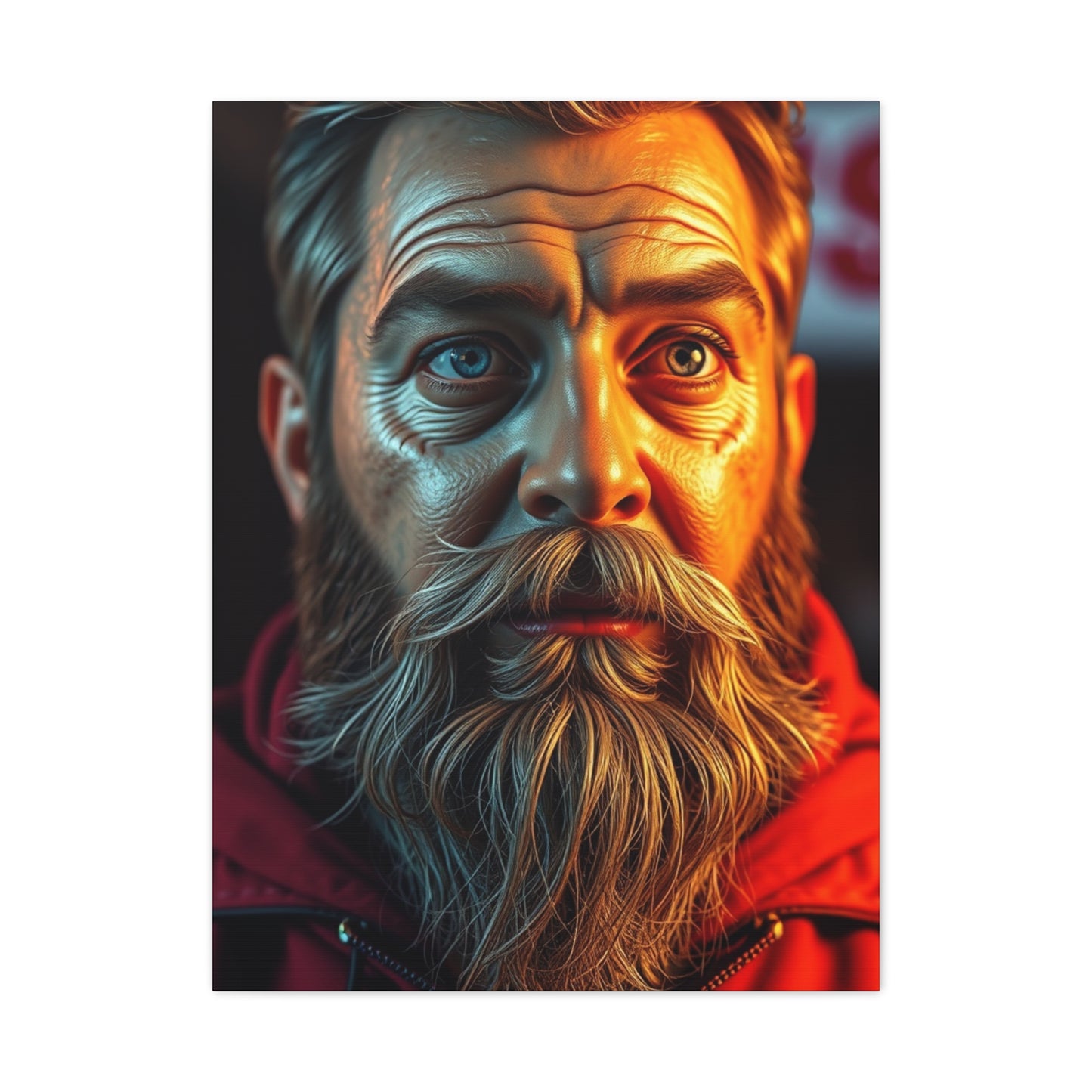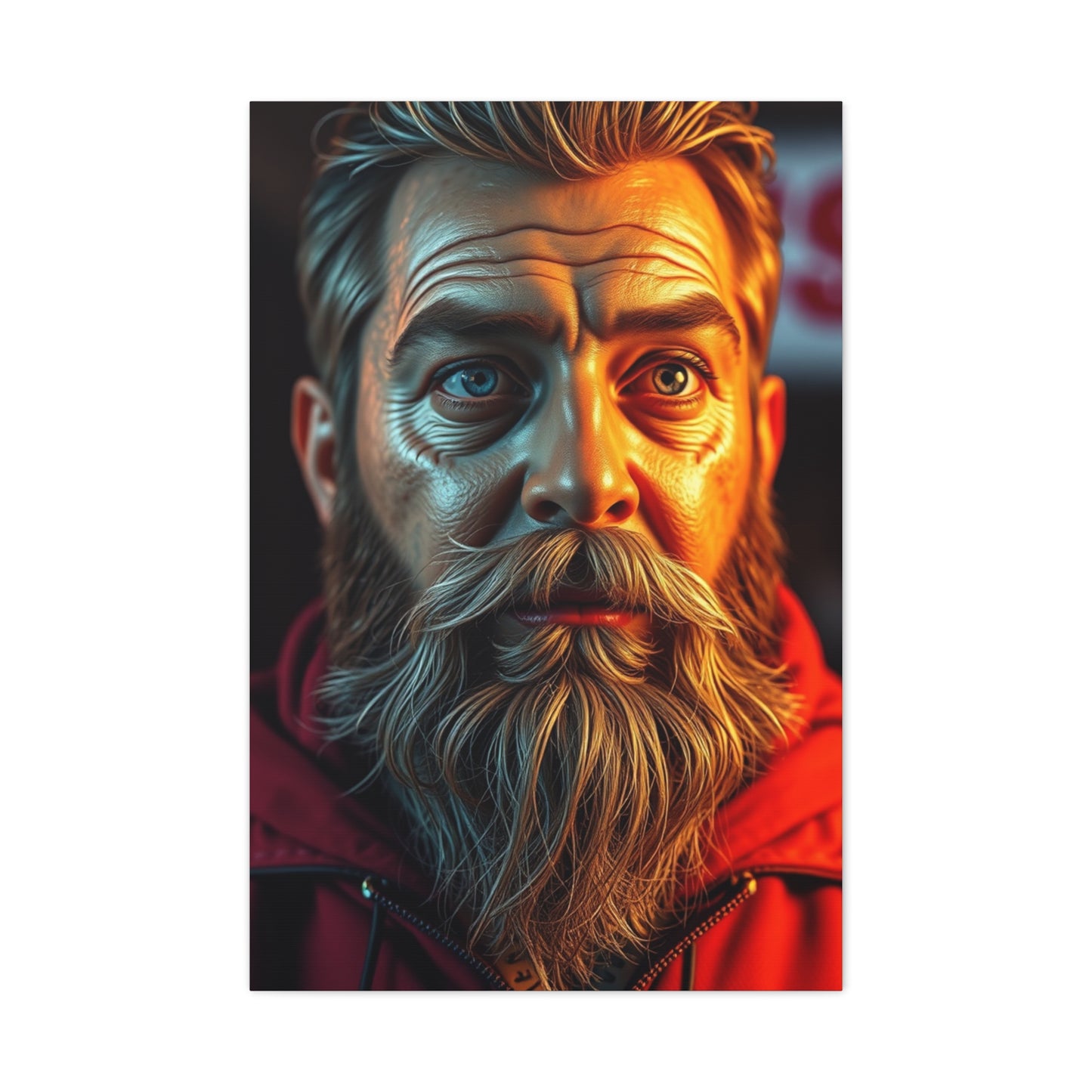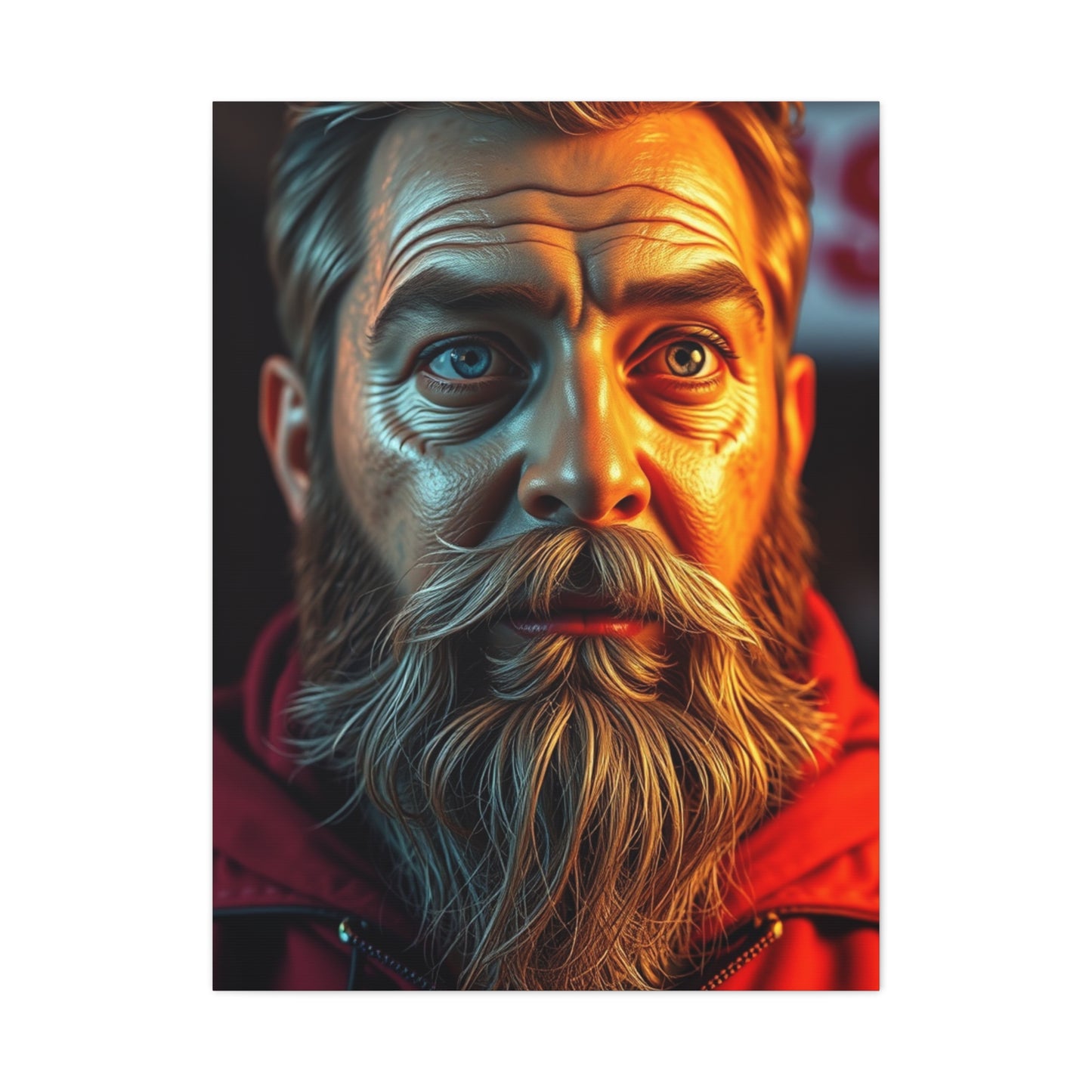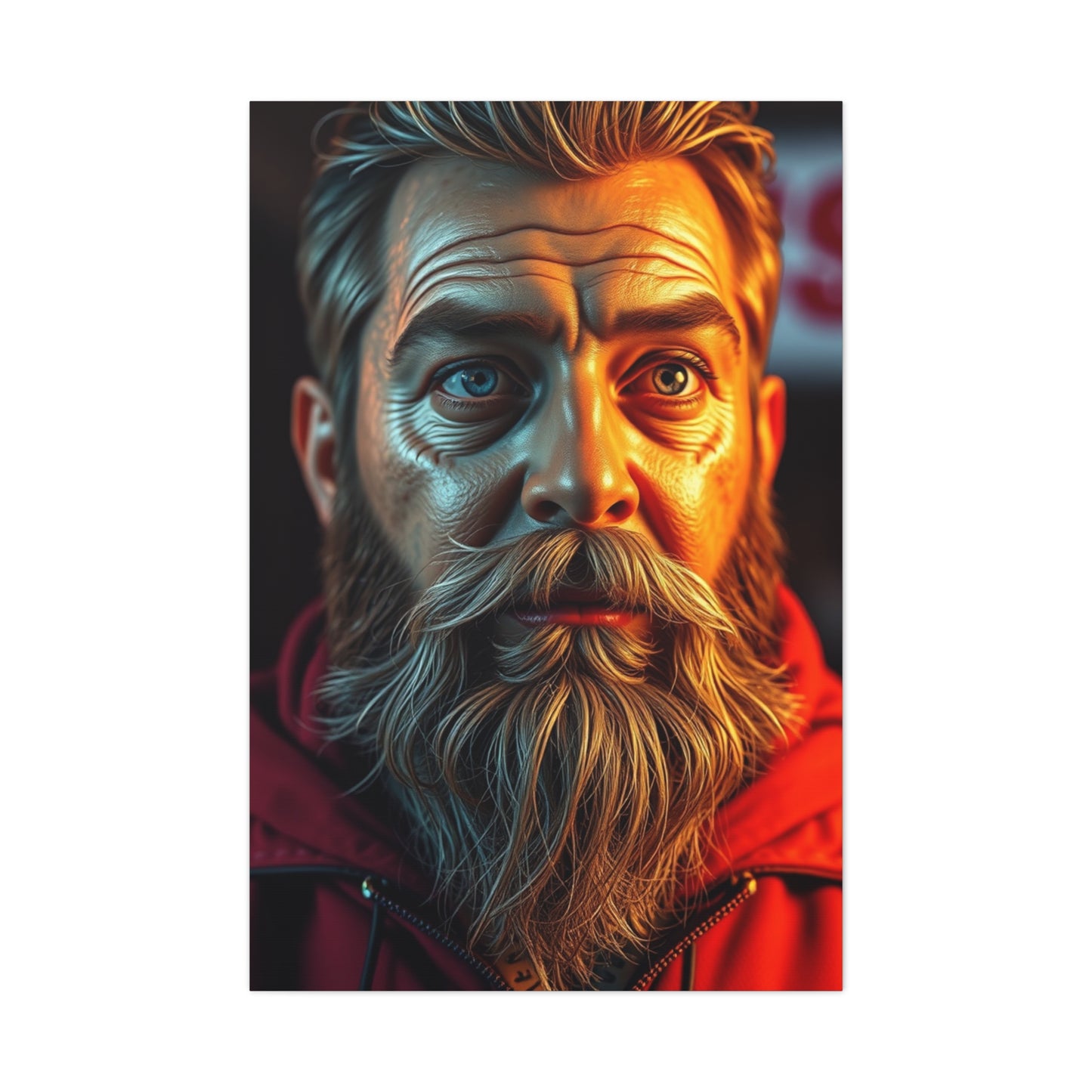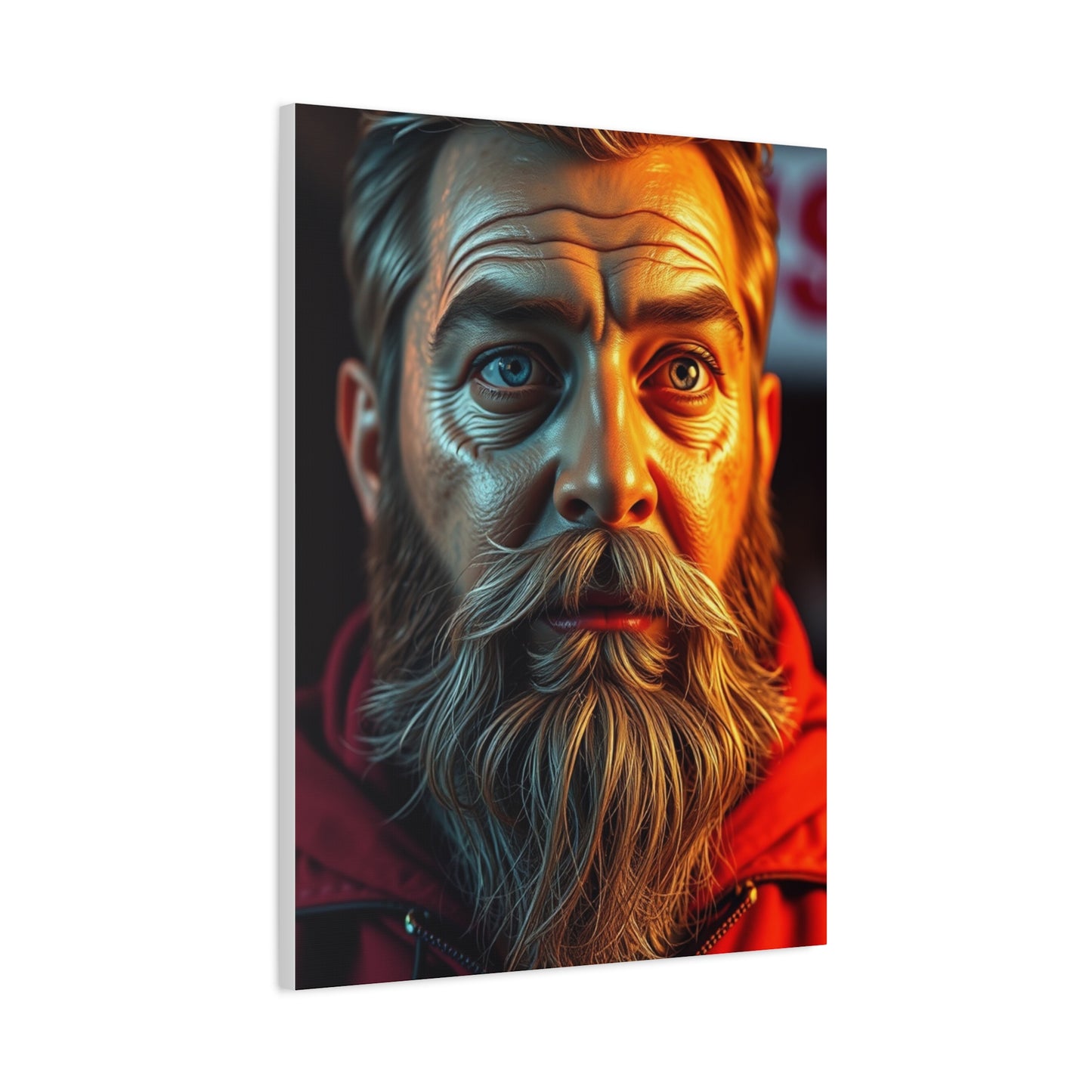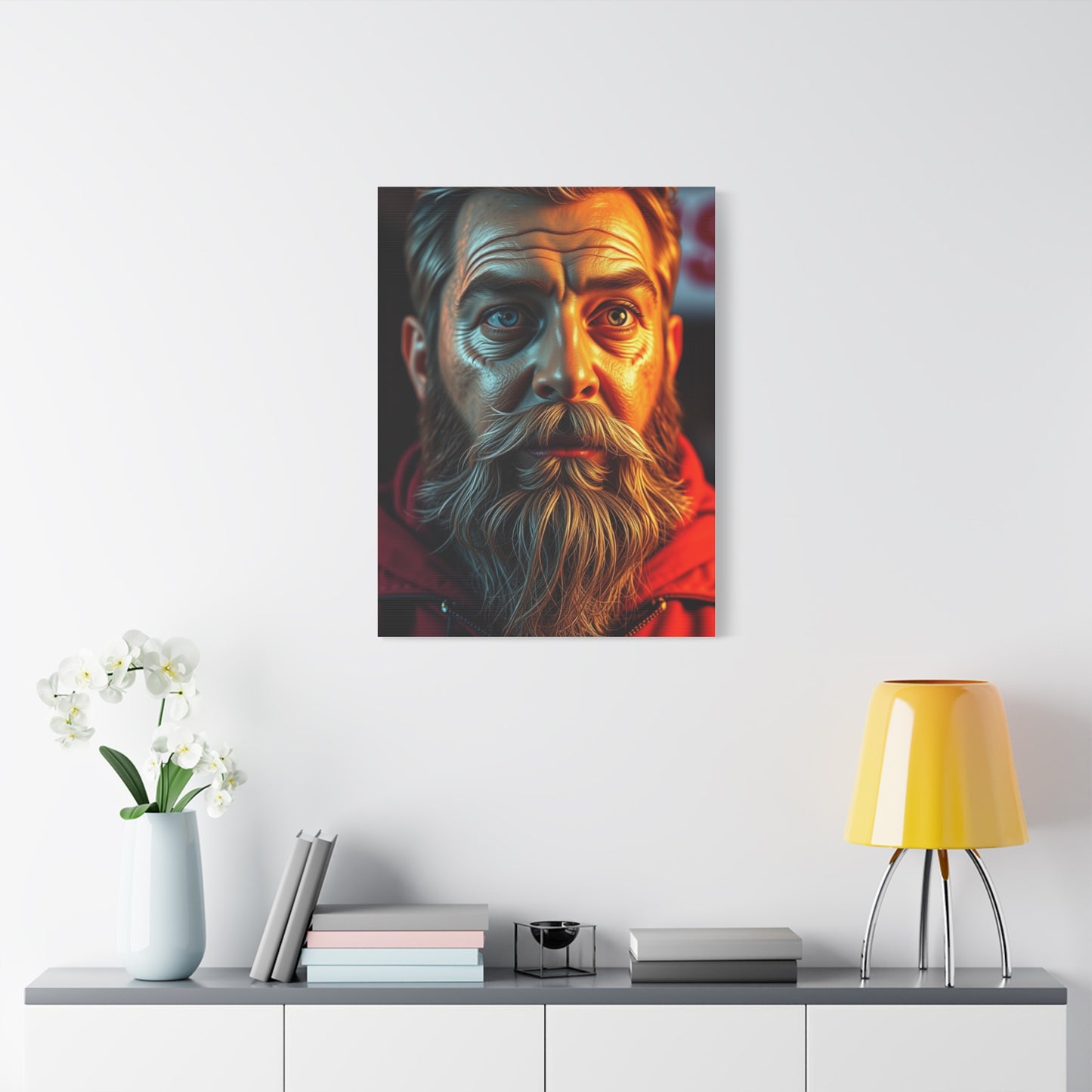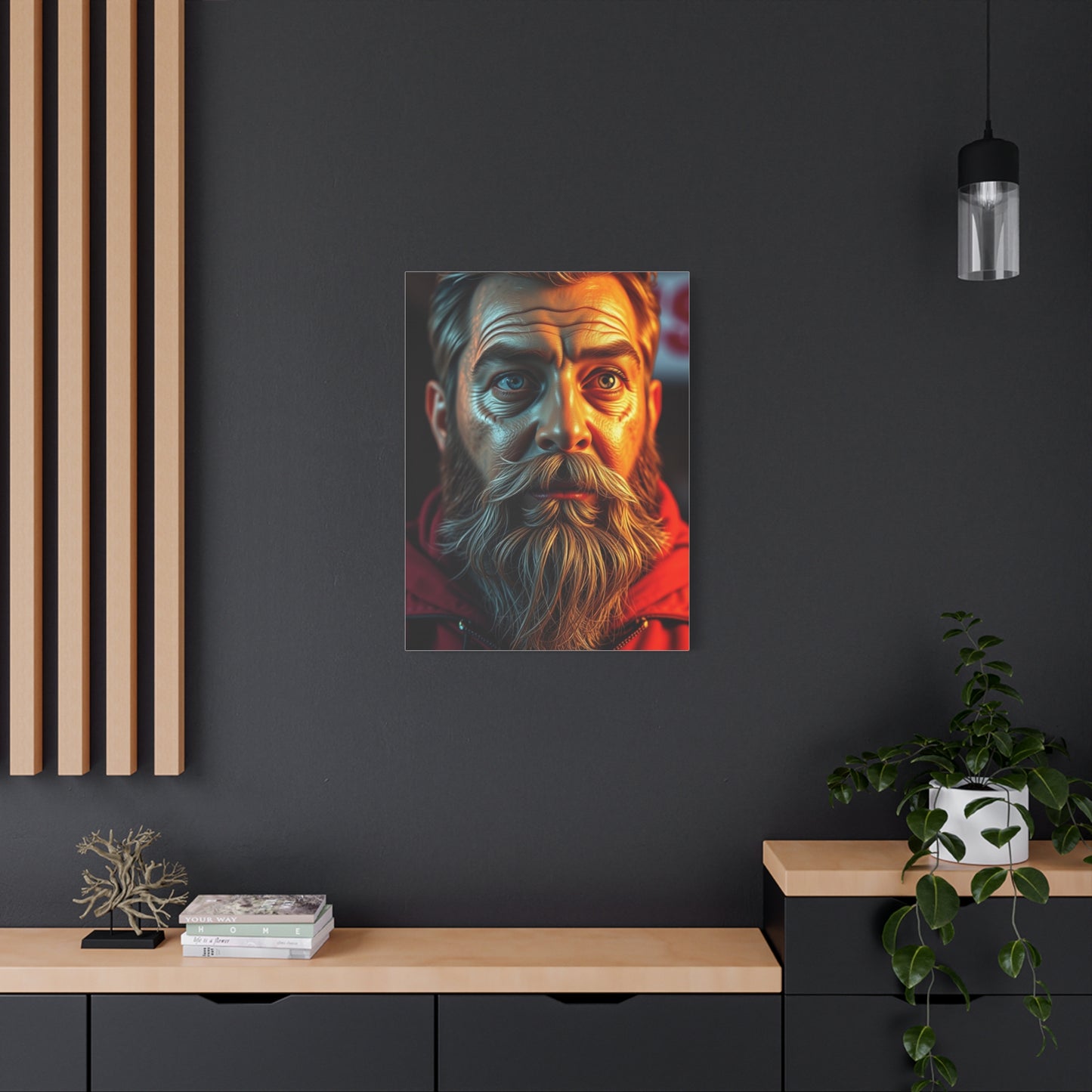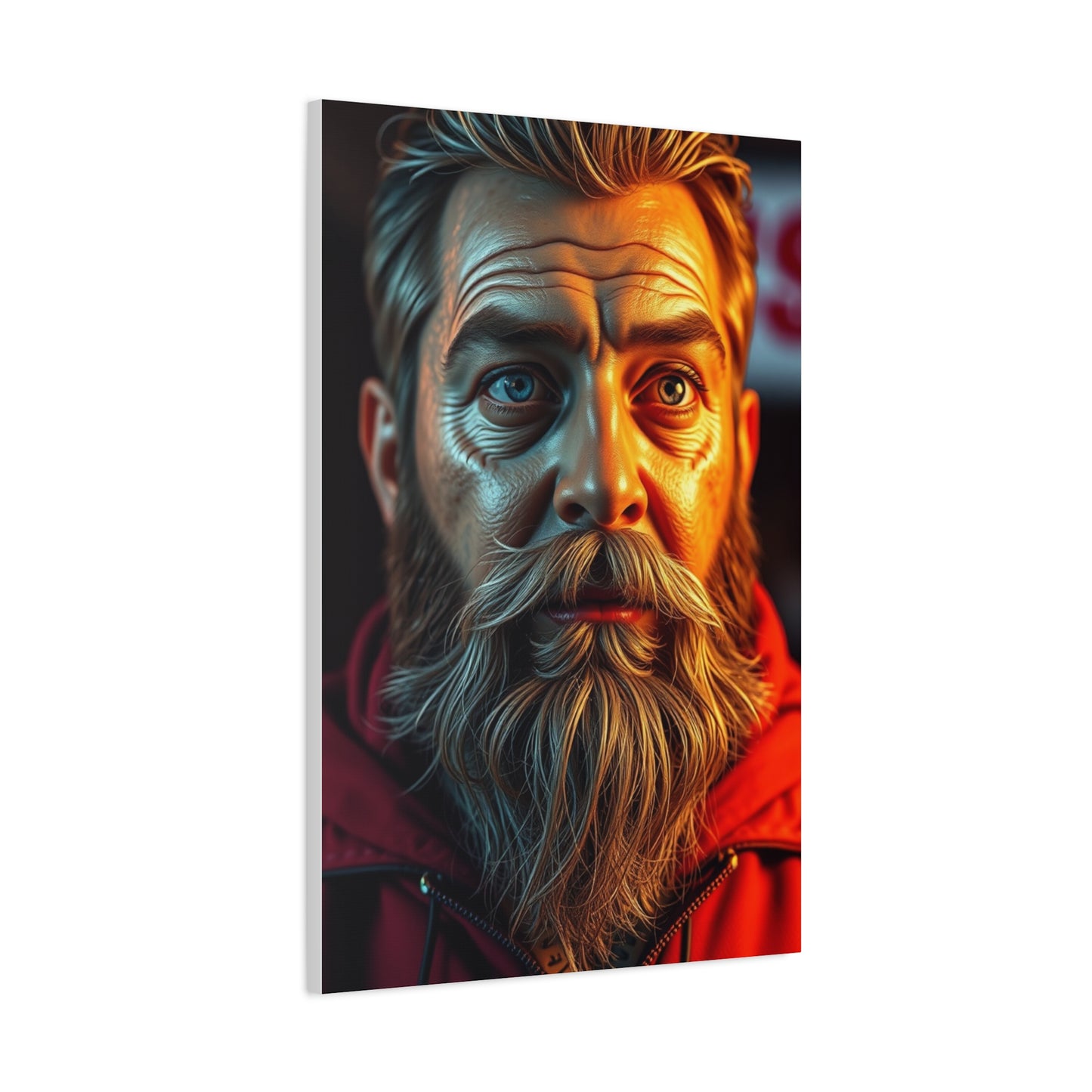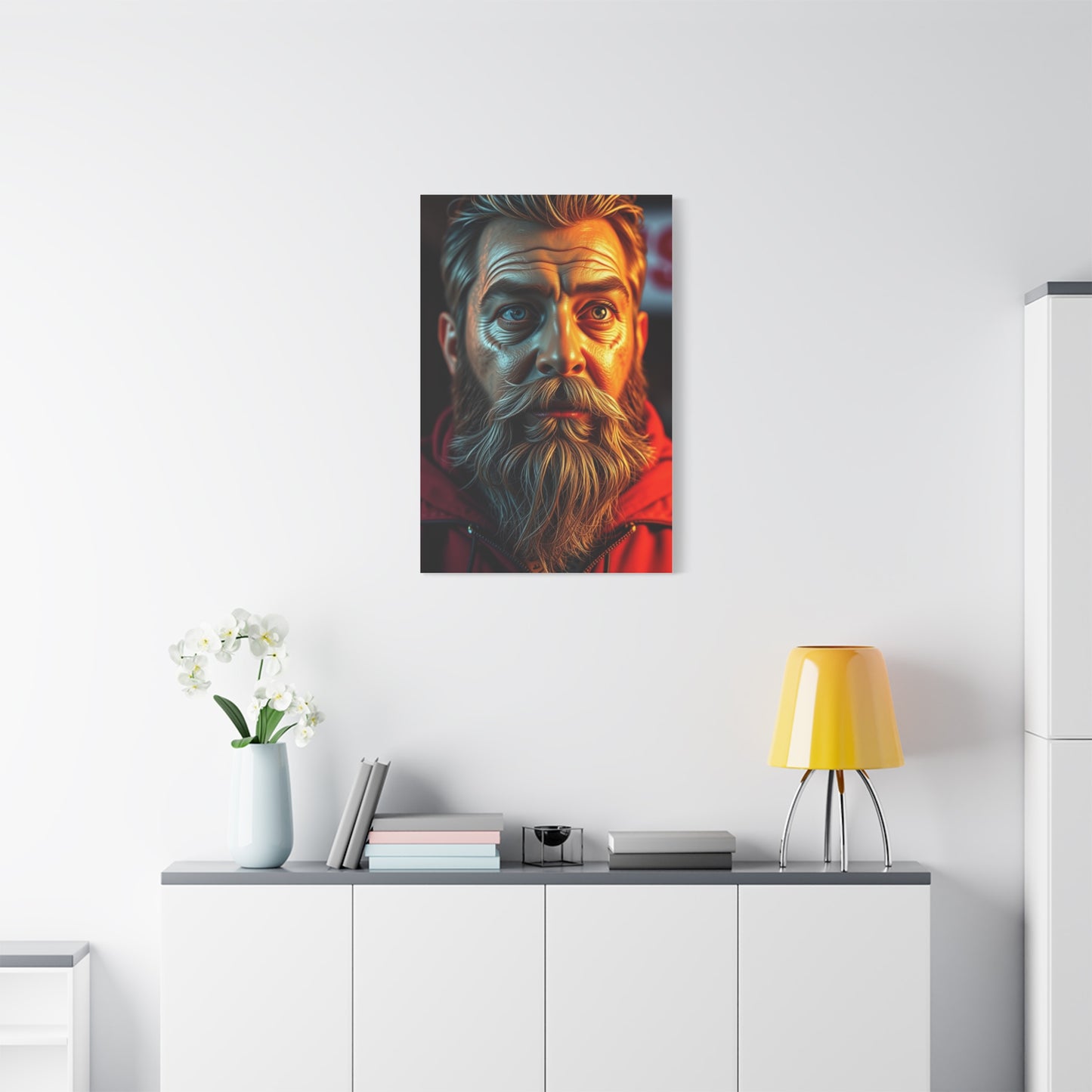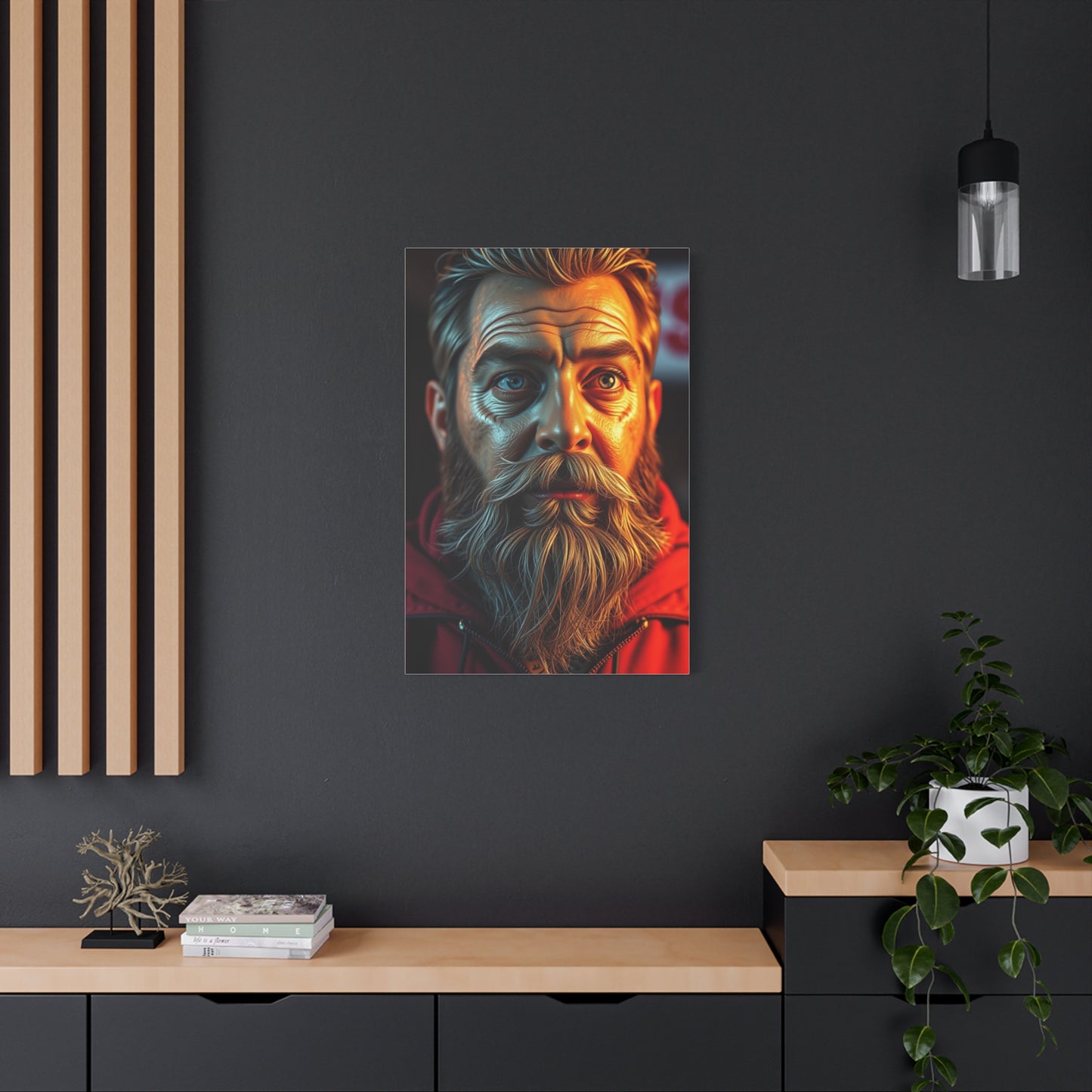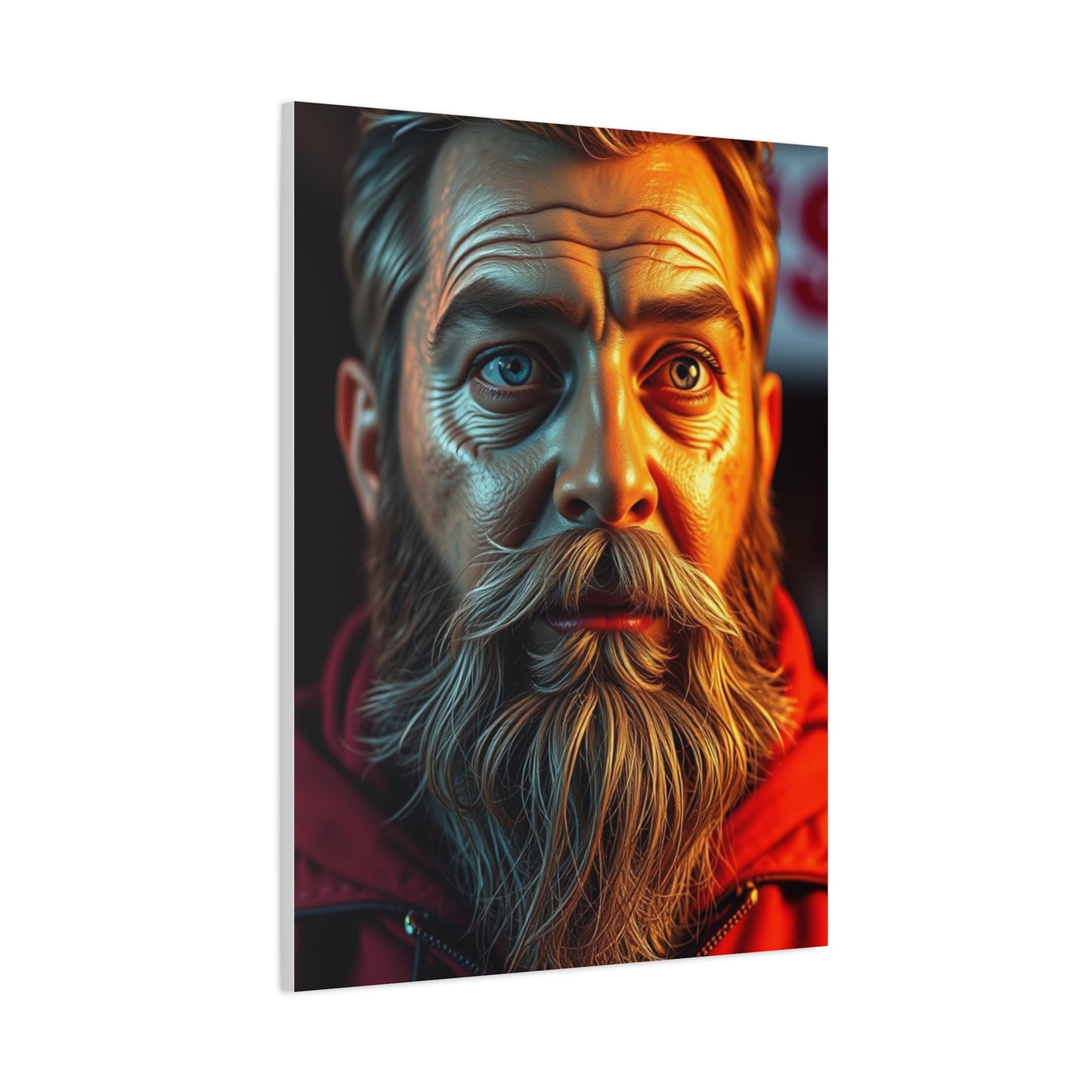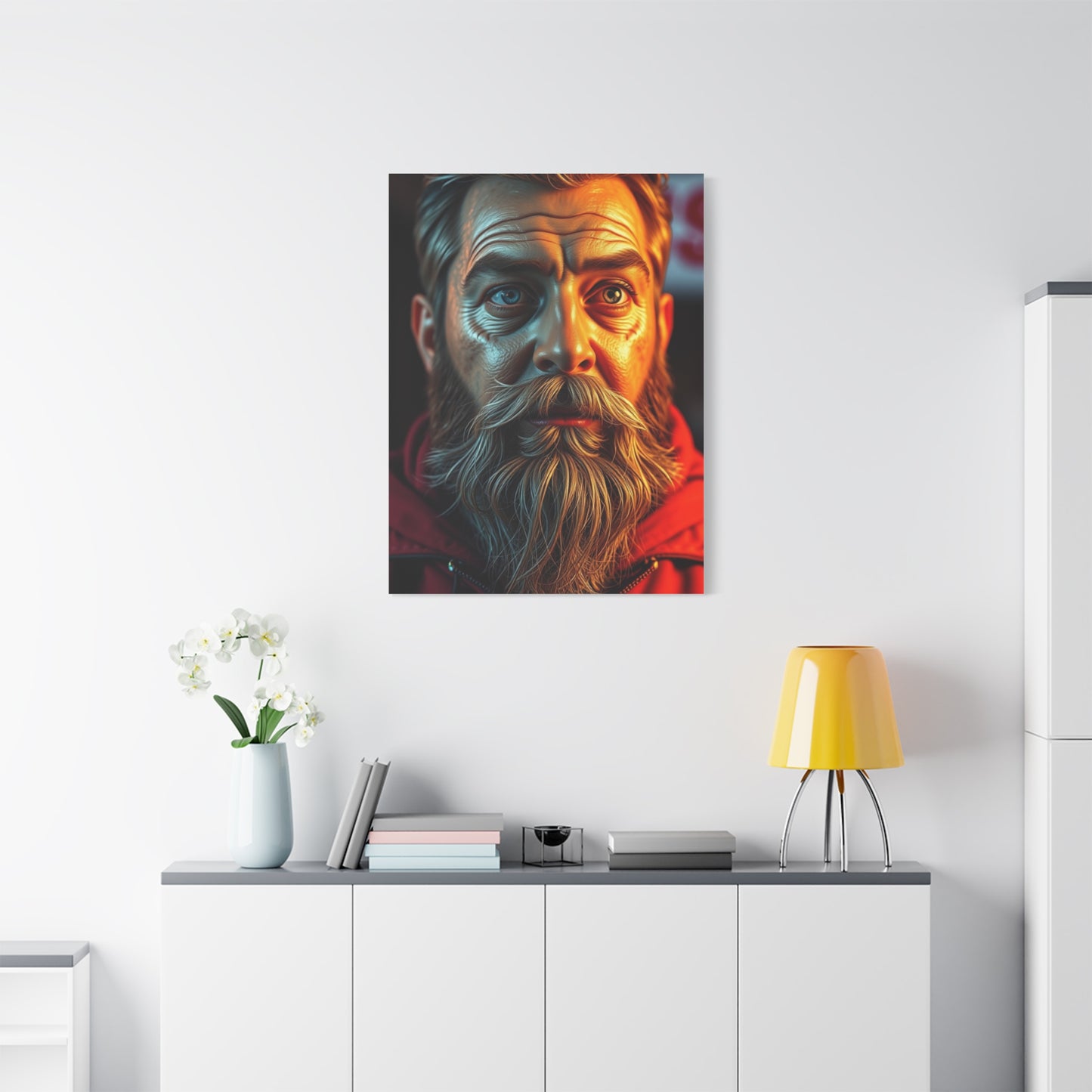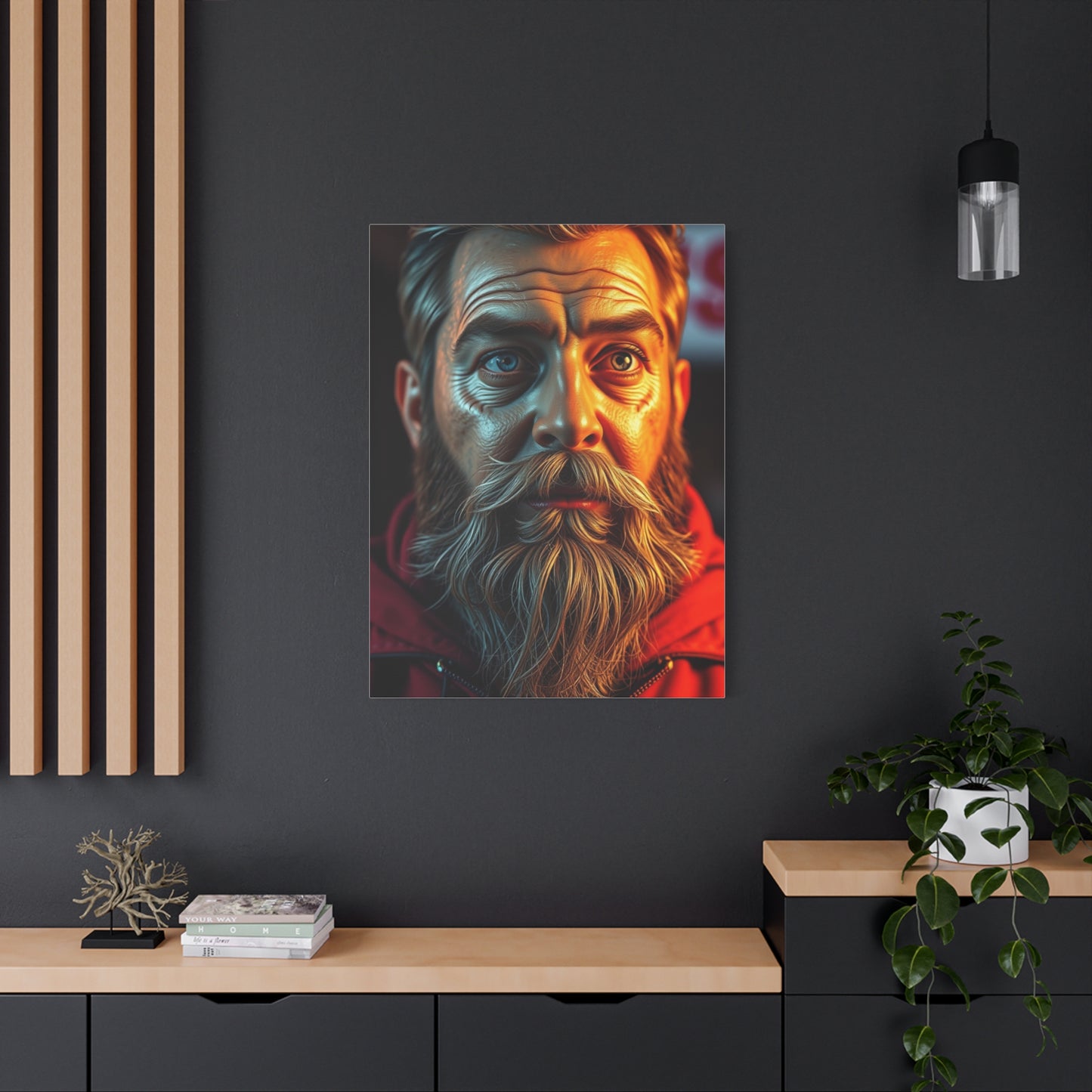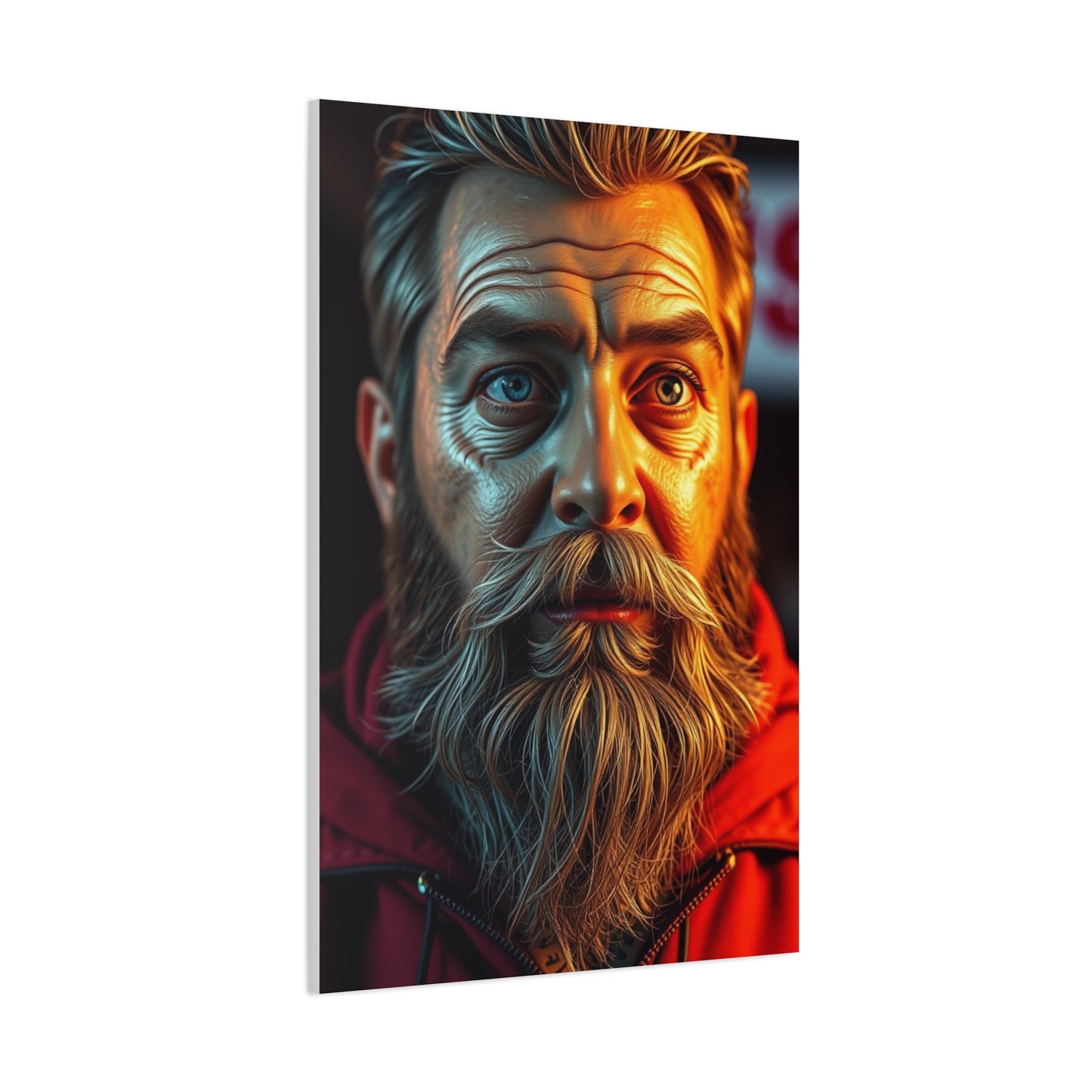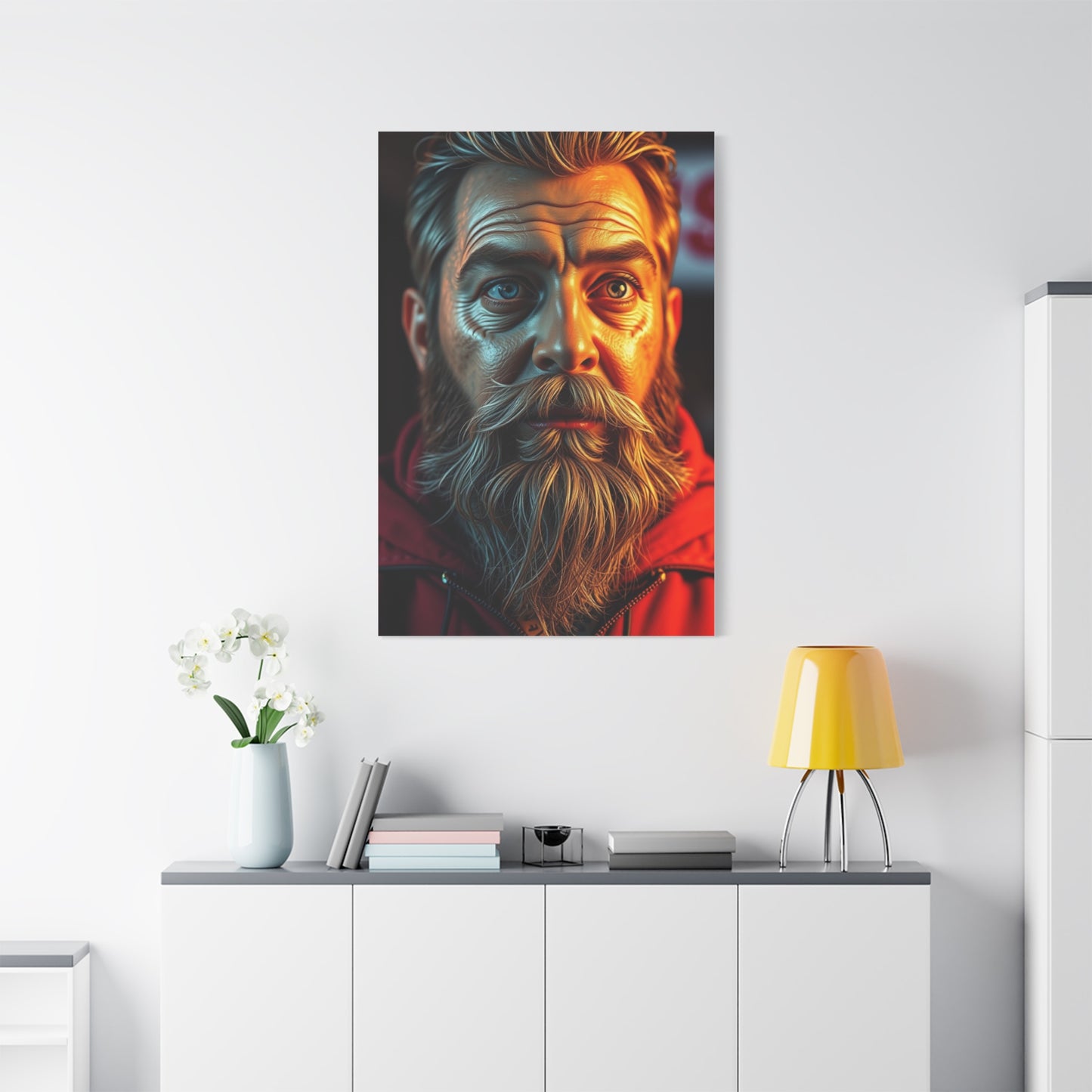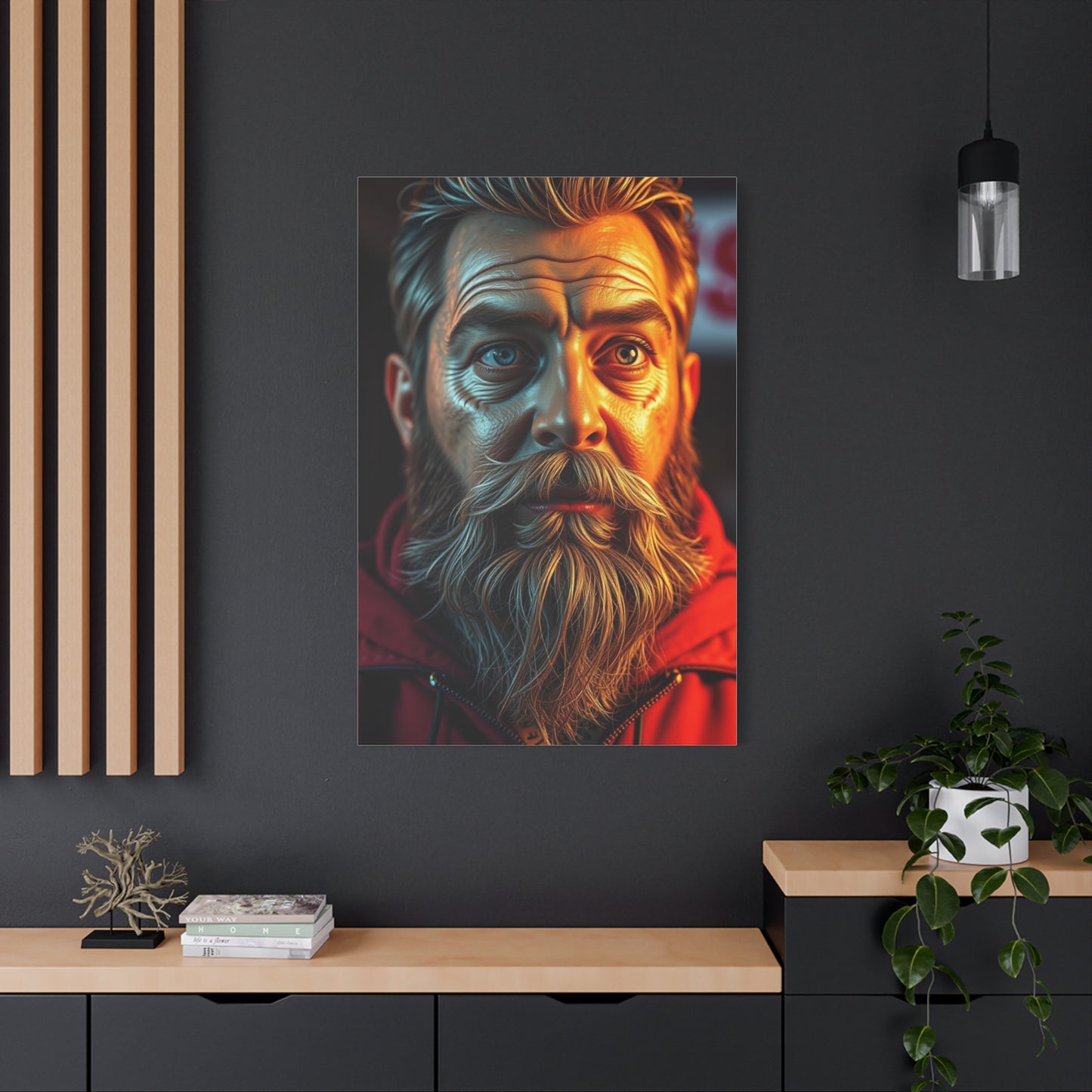Discovering the Beauty of Refined Aesthetic Canvas Art
Refined aesthetic canvas art represents a sophisticated approach to visual expression that emphasizes subtlety, balance, and timeless appeal. This artistic movement focuses on creating harmony through carefully curated color palettes, clean compositions, and thoughtful design elements that speak to the soul without overwhelming the senses. The beauty of refined aesthetic canvas art lies in its ability to transform any environment into a sanctuary of calm sophistication.
The philosophy behind refined aesthetic canvas wall art centers on the principle that true elegance emerges from restraint rather than excess. Artists working within this aesthetic framework carefully select elements that contribute to an overall sense of balance and tranquility. Each brushstroke, color choice, and compositional decision serves a purpose in creating a cohesive visual narrative that resonates with viewers on a deeper level.
Contemporary artists embracing the refined aesthetic movement often draw inspiration from various sources, including nature's subtle beauty, architectural minimalism, and the Japanese concept of wabi-sabi. This artistic approach celebrates imperfection as a form of beauty, finding grace in simplicity and meaning in negative space. The resulting canvas works possess an inherent sophistication that transcends fleeting trends and maintains relevance across different eras.
The appeal of refined aesthetic canvas art extends beyond mere visual pleasure. These artworks serve as meditation points, offering viewers moments of respite from the chaos of modern life. The carefully chosen color schemes, often featuring muted tones and gentle gradients, create a sense of serenity that promotes mental well-being and emotional balance.
Minimalist Principles in Contemporary Canvas Compositions
Minimalism forms the backbone of refined aesthetic canvas art, emphasizing the power of reduction and the beauty found in essential elements. This artistic philosophy challenges creators to distill their vision to its most fundamental components, removing unnecessary details that might distract from the core message. The result is artwork that speaks volumes through whispered tones rather than shouted proclamations.
Contemporary canvas compositions embracing minimalist principles often feature vast expanses of subtle color punctuated by carefully placed focal points. These focal points might take the form of gentle geometric shapes, organic lines inspired by nature, or abstract forms that suggest rather than explicitly represent. The interplay between positive and negative space becomes crucial in creating visual tension and maintaining viewer engagement.
The color palette in minimalist canvas art typically favors neutral tones, earth colors, and soft pastels. These subdued hues work harmoniously together, creating a sense of cohesion and calm. Artists might introduce subtle variations in texture or finish to add depth and interest without compromising the overall serene aesthetic. The strategic use of white space allows each element to breathe and maintains the composition's inherent balance.
Texture plays a significant role in minimalist canvas compositions, with artists employing various techniques to create subtle variations in surface quality. These textural elements add tactile interest and visual depth without disrupting the overall harmony of the piece. The careful application of paint, whether through smooth gradations or gentle impasto techniques, contributes to the artwork's refined character.
The success of minimalist canvas art lies in its ability to create maximum impact with minimum means. Each element must earn its place within the composition, serving both aesthetic and emotional purposes. This disciplined approach results in artworks that possess an inherent integrity and timeless appeal that resonates with contemporary audiences seeking clarity and peace.
Color Theory and Palette Selection for Refined Aesthetics
The selection and application of color in refined aesthetic canvas art require a deep understanding of color theory and its psychological implications. Successful artists in this genre recognize that color choices directly influence mood, perception, and emotional response. The refined aesthetic movement favors color palettes that promote tranquility, sophistication, and timeless appeal.
Neutral color schemes form the foundation of most refined aesthetic canvas compositions. These palettes typically include various shades of white, cream, beige, gray, and soft browns. These colors provide a stable base that allows for subtle variations and gentle contrasts without creating visual discord. The beauty of neutral palettes lies in their ability to adapt to different lighting conditions and complement various environmental settings.
Monochromatic color schemes represent another popular approach within refined aesthetic canvas art. These compositions explore the subtle variations within a single color family, creating depth and interest through changes in saturation, brightness, and temperature. A monochromatic blue composition, for example, might range from the palest sky blue to deeper navy tones, creating a sophisticated gradient that captures the essence of serenity.
Analogous color harmonies, featuring colors adjacent to each other on the color wheel, create gentle transitions and natural flow within refined aesthetic canvas compositions. These harmonies might explore the relationship between blue and green, creating oceanic themes, or combine warm yellows and oranges to evoke sunset moods. The key is maintaining subtlety in color intensity and avoiding jarring contrasts that might disrupt the peaceful atmosphere.
The psychological impact of color choices cannot be understated in refined aesthetic canvas art. Cool colors such as blues and greens promote feelings of calm and tranquility, making them ideal for creating restful environments. Warm colors like soft peaches and gentle yellows can add warmth and comfort without overwhelming the senses. The strategic use of color temperature helps artists create specific moods and emotional responses within their compositions.
Texture and Medium Exploration in Canvas Wall Art
The exploration of texture and medium represents a crucial aspect of creating compelling refined aesthetic canvas wall art. Artists working within this genre often experiment with various techniques and materials to achieve subtle surface variations that add depth and visual interest without compromising the overall serene aesthetic. The careful manipulation of paint application, canvas preparation, and finishing techniques contributes significantly to the artwork's refined character.
Traditional oil painting techniques offer artists numerous opportunities for texture exploration. The slow-drying nature of oil paints allows for extended working time, enabling artists to create smooth gradations, subtle blending, and refined finish quality. Glazing techniques, where transparent layers of paint are applied over dried base colors, can create luminous effects and depth that enhance the sophisticated appeal of refined aesthetic compositions.
Acrylic mediums provide artists with versatility in texture creation through the use of various gels, pastes, and additives. These materials can create everything from subtle surface variations to more pronounced textural elements while maintaining the clean, sophisticated appearance characteristic of refined aesthetic art. The quick-drying nature of acrylics allows for rapid layering and experimentation with different textural approaches.
Mixed media approaches in refined aesthetic canvas art often incorporate natural materials such as sand, paper, or fabric to create subtle textural variations. These additions must be carefully integrated to maintain the overall harmony and sophistication of the piece. The key is achieving textural interest without creating visual chaos or disrupting the peaceful aesthetic that defines this artistic movement.
Canvas preparation techniques also contribute to the final texture of refined aesthetic artworks. Artists might choose smooth, fine-grain canvases for crisp, clean lines and subtle color transitions, or select slightly textured surfaces to add gentle visual interest. The priming process can also be manipulated to create subtle background textures that enhance the overall composition without dominating the visual narrative.
The application techniques used in creating refined aesthetic canvas art require precision and control. Brush selection becomes crucial, with artists often preferring soft bristles that create smooth applications and gentle blending. Palette knife techniques can add subtle textural variations while maintaining the clean aesthetic characteristic of this artistic movement. The goal is always to achieve maximum visual impact through minimum means.
Compositional Balance and Harmony in Wall Art
Achieving compositional balance and harmony represents the cornerstone of successful refined aesthetic canvas wall art. This balance involves the careful arrangement of visual elements to create a sense of equilibrium and flow that guides the viewer's eye through the composition in a natural, pleasing manner. The principles of design become particularly important in this context, as subtle imbalances can disrupt the peaceful atmosphere that defines refined aesthetic art.
The rule of thirds serves as a fundamental guideline in composing refined aesthetic canvas art, though artists often adapt this principle to suit their specific vision. Dividing the canvas into nine equal sections and placing key elements along these lines or at their intersections creates natural focal points and visual interest. However, refined aesthetic artists might deliberately break this rule to create more subtle, flowing compositions that emphasize overall harmony over dramatic focal points.
Symmetrical and asymmetrical balance both play important roles in refined aesthetic compositions. Symmetrical balance creates formal, stable arrangements that promote feelings of calm and order. This approach works particularly well in abstract compositions where geometric forms or color blocks are arranged in mirror-like formations. The resulting artworks possess an inherent tranquility that resonates with viewers seeking peace and stability.
Asymmetrical balance, while more complex to achieve, often results in more dynamic and interesting compositions within the refined aesthetic framework. This approach involves balancing visual weight through the strategic placement of elements of different sizes, colors, or textures. A large, light-colored area might be balanced by a smaller, more intensely colored element, creating equilibrium without perfect symmetry.
The use of negative space becomes crucial in refined aesthetic canvas compositions. These empty areas are not merely backgrounds but active elements that contribute to the overall balance and harmony of the piece. Negative space provides visual rest areas that prevent compositions from becoming cluttered or overwhelming. The careful manipulation of positive and negative space relationships creates rhythm and flow that guide viewer perception.
Scale relationships within refined aesthetic canvas art require careful consideration to maintain harmony. Elements must relate to each other in proportions that feel natural and balanced. The golden ratio often serves as a guide for these relationships, though artists might adjust these proportions to achieve specific emotional or aesthetic effects. The goal is creating compositions that feel inherently right and promote viewer comfort and contemplation.
Contemporary Artists Shaping Refined Aesthetic Movement
The refined aesthetic movement in contemporary canvas wall art has been shaped by numerous talented artists who have embraced the principles of minimalism, balance, and sophisticated simplicity. These artists have developed unique approaches to creating artwork that speaks to modern sensibilities while maintaining timeless appeal. Their contributions have helped define the characteristics and boundaries of refined aesthetic art.
Many contemporary artists working within the refined aesthetic movement draw inspiration from various cultural traditions and philosophical approaches. The influence of Japanese aesthetics, particularly the concepts of ma (negative space) and kanso (simplicity), can be seen in numerous contemporary works. These artists understand that beauty often emerges from what is left unsaid rather than what is explicitly shown.
The digital age has also influenced refined aesthetic artists, with many incorporating digital design principles into their traditional canvas work. The clean lines and subtle gradations characteristic of digital art have found their way into painted compositions, creating hybrid works that bridge traditional and contemporary approaches. This evolution has expanded the visual vocabulary available to artists working within the refined aesthetic framework.
Environmental consciousness has become another driving force among contemporary refined aesthetic artists. Many creators within this movement use sustainable materials and techniques, reflecting a broader cultural shift toward environmental responsibility. This approach aligns naturally with the refined aesthetic philosophy of doing more with less, creating meaningful art without excess or waste.
The global art market has embraced refined aesthetic canvas art, with collectors and galleries recognizing its broad appeal and investment potential. This commercial success has encouraged more artists to explore refined aesthetic approaches, leading to increased innovation and evolution within the movement. The result is a vibrant, growing community of artists who continue to push the boundaries of what refined aesthetic art can achieve.
Social media platforms have also played a role in promoting refined aesthetic artists and their work. The visual nature of these platforms naturally favors the clean, sophisticated appearance of refined aesthetic art, helping to spread awareness and appreciation for this artistic movement. This increased visibility has helped artists connect with audiences and collectors who appreciate their aesthetic vision.
Geometric Abstraction in Refined Canvas Art
Geometric abstraction represents a significant strand within refined aesthetic canvas wall art, offering artists a vocabulary of clean lines, perfect forms, and mathematical relationships that align perfectly with the movement's emphasis on order and harmony. This approach to abstract art eliminates representational elements in favor of pure geometric forms, creating compositions that speak through shape, color, and spatial relationships rather than narrative content.
The appeal of geometric abstraction within refined aesthetic art lies in its inherent orderliness and predictability. Geometric forms possess an intrinsic stability that promotes feelings of calm and security. Circles, squares, triangles, and rectangles become building blocks for compositions that explore relationships between forms, colors, and spatial arrangements. The precision required in geometric abstraction aligns with the refined aesthetic emphasis on careful consideration and thoughtful execution.
Color relationships within geometric abstract compositions take on heightened importance due to the simplified forms involved. Without representational content to carry meaning, color becomes the primary vehicle for emotional expression and visual interest. Artists working within this framework often employ limited color palettes to maintain harmony while creating subtle variations in hue, saturation, and value to distinguish between different geometric elements.
The mathematical precision inherent in geometric abstraction appeals to viewers seeking order and rationality in their visual environment. These compositions often employ mathematical relationships such as the golden ratio, fibonacci sequences, or modular systems to determine proportions and arrangements. The resulting artworks possess an inherent logic that satisfies intellectual as well as aesthetic sensibilities.
Contemporary geometric abstract artists working within the refined aesthetic movement often incorporate subtle variations and imperfections that humanize their precise compositions. Hand-painted lines might display slight irregularities that distinguish them from mechanically produced graphics, adding warmth and personality to otherwise clinical arrangements. These human touches prevent geometric abstractions from becoming cold or impersonal.
The scale of geometric elements within refined aesthetic compositions requires careful consideration to maintain visual balance and harmony. Large geometric forms create bold statements and serve as dominant focal points, while smaller elements provide supporting rhythms and textural interest. The interaction between different scales creates visual hierarchy and guides viewer attention through the composition in controlled, intentional ways.
Organic Forms and Natural Inspiration
While geometric abstraction represents one approach to refined aesthetic canvas wall art, organic forms and natural inspiration offer an alternative path that maintains sophistication through different means. Artists working with organic forms draw inspiration from nature's inherent beauty, translating natural patterns, textures, and movements into abstract compositions that celebrate the elegance found in the natural world.
The appeal of organic forms within refined aesthetic art lies in their ability to create visual interest through gentle curves, flowing lines, and natural rhythms that echo patterns found in nature. These forms avoid the sharp angles and rigid structures of geometric abstraction while maintaining the movement's commitment to harmony and balance. The result is artwork that feels both sophisticated and approachable, combining refinement with natural warmth.
Botanical inspiration frequently appears in refined aesthetic canvas art, though not in literal representational form. Artists might abstract the essence of plant forms, capturing the graceful curve of a stem, the delicate branching pattern of leaves, or the subtle color gradations found in flower petals. These natural elements are distilled to their essential characteristics and integrated into compositions that maintain the clean, sophisticated appearance characteristic of refined aesthetic art.
Water-inspired organic forms offer another rich source of inspiration for refined aesthetic artists. The flowing, continuous movement of water translates beautifully into abstract compositions that emphasize grace and fluidity. Wave patterns, ripple effects, and tidal movements can be interpreted through color gradations, flowing lines, and gentle textural variations that maintain the peaceful atmosphere central to refined aesthetic art.
The color palettes associated with organic forms in refined aesthetic art often reflect natural color harmonies found in specific environments. Beach-inspired compositions might feature soft sandy beiges, pale blues, and gentle grays. Forest-inspired works could explore various greens with brown and earth tone accents. These natural color relationships feel inherently harmonious and promote the sense of tranquility valued in refined aesthetic art.
The challenge in working with organic forms within the refined aesthetic framework lies in maintaining sophistication while embracing nature's sometimes chaotic beauty. Artists must distill natural complexity into essential elements that serve the overall composition without creating visual confusion or disrupting the peaceful atmosphere that defines this artistic movement.
Abstract Expressionism Within Refined Boundaries
Abstract expressionism, traditionally associated with bold gestures and emotional intensity, might seem at odds with the refined aesthetic movement's emphasis on restraint and subtlety. However, contemporary artists have found ways to incorporate expressionistic elements within refined boundaries, creating canvas wall art that maintains emotional authenticity while observing the movement's commitment to sophistication and harmony.
The key to successful integration of abstract expressionistic elements within refined aesthetic art lies in controlling gesture and color intensity. Rather than the dramatic, sweeping brushstrokes characteristic of traditional abstract expressionism, refined aesthetic artists employ more controlled gestures that suggest emotion without overwhelming the composition. These subdued expressions of feeling maintain the artwork's sophisticated character while adding human warmth and authenticity.
Color selection becomes crucial when incorporating expressionistic elements into refined aesthetic compositions. Instead of the bright, often clashing colors favored by traditional abstract expressionists, refined aesthetic artists choose more subdued palettes that allow for emotional expression within harmonious frameworks. Muted earth tones, soft pastels, and gentle gradations replace jarring color combinations while still permitting meaningful emotional communication.
The scale of expressionistic gestures must also be carefully controlled to maintain refinement. Large, dramatic brushstrokes might be replaced by smaller, more intimate marks that collectively create emotional impact without dominating the composition. This approach allows for personal expression while maintaining the balanced, contemplative quality valued in refined aesthetic art.
Layering techniques offer another avenue for incorporating expressionistic elements into refined compositions. Artists might build up subtle layers of color and texture that suggest emotional depth while maintaining surface sophistication. These layers create history and complexity within the artwork while preserving the clean, refined appearance that defines the movement.
The emotional content expressed through refined abstract expressionism tends toward contemplative rather than dramatic feelings. Artists might explore themes of serenity, melancholy, hope, or quiet joy rather than anger, passion, or despair. This emotional restraint aligns with the movement's overall philosophy while still allowing for meaningful human expression and connection.
Photography-Inspired Canvas Techniques
The influence of photography on contemporary canvas wall art has led to innovative techniques that combine photographic sensibilities with traditional painting approaches. Refined aesthetic artists have particularly embraced photography-inspired methods that emphasize subtle tonal relationships, atmospheric effects, and compositional strategies derived from photographic practice. These techniques expand the visual vocabulary available to canvas artists while maintaining the sophisticated character of refined aesthetic art.
Atmospheric perspective, a technique borrowed from landscape photography, creates depth and mystery in refined aesthetic canvas compositions. Artists achieve this effect through careful gradation of color and value, with distant elements becoming progressively lighter and less distinct. This photographic approach to depth creation adds sophisticated spatial interest while maintaining the gentle, contemplative quality characteristic of refined aesthetic art.
The concept of depth of field, fundamental to photography, has found expression in canvas art through selective focus techniques. Artists might render certain areas of their compositions with sharp clarity while allowing other areas to blur gently, creating focal hierarchies that guide viewer attention. This selective clarity mimics photographic depth of field while adding sophisticated visual interest to painted compositions.
Lighting studies derived from photographic practice inform the way refined aesthetic artists approach illumination in their work. The subtle modeling of forms through controlled light and shadow relationships creates volume and atmosphere without resorting to dramatic contrasts that might disrupt the peaceful character of refined aesthetic art. These gentle lighting effects add sophistication and realism while maintaining artistic abstraction.
Color temperature concepts from photography influence how refined aesthetic artists balance warm and cool colors within their compositions. Understanding how different light sources affect color perception allows artists to create more convincing atmospheric effects and emotional responses. The careful manipulation of color temperature contributes to the sophisticated, professional appearance characteristic of refined aesthetic canvas art.
The compositional strategies developed by photographers, including the use of leading lines, framing devices, and rule of thirds applications, have enriched the visual vocabulary available to canvas artists. These techniques, adapted for painted media, help create more engaging and visually sophisticated compositions that maintain viewer interest while preserving the calm, contemplative atmosphere valued in refined aesthetic art.
Digital Art Influence on Traditional Canvas
The digital revolution has profoundly influenced traditional canvas wall art, particularly within the refined aesthetic movement where clean lines, subtle gradations, and precise color relationships align naturally with digital design principles. Contemporary canvas artists have embraced digital techniques and aesthetics while maintaining the tactile, handcrafted qualities that distinguish painted works from purely digital creations.
Vector art aesthetics have found expression in refined aesthetic canvas art through the use of clean, precise lines and simplified forms that echo digital design sensibilities. Artists achieve these effects through careful planning and controlled execution, creating painted works that possess the clarity and precision associated with digital art while retaining the warmth and texture of traditional media.
Color gradients, easily achieved in digital media, have inspired canvas artists to develop techniques for creating smooth color transitions that rival digital perfection. These gradients add sophisticated visual interest and depth to refined aesthetic compositions while maintaining the subtle, harmonious character that defines the movement. The challenge lies in achieving digital-like precision through traditional painting techniques.
The layer-based approach fundamental to digital art creation has influenced how canvas artists structure their compositions. Artists might plan their works using digital sketching tools before translating these designs to canvas, or they might adopt layer-like thinking in their painting process, building up compositions through successive applications of paint that maintain clarity and purpose.
Typography-inspired elements from digital design occasionally appear in refined aesthetic canvas art, though typically in highly abstracted forms that maintain the movement's commitment to sophisticated visual harmony. Letter forms might inspire abstract shapes, or typographic spacing principles might influence compositional arrangements without explicit textual content.
The precision and control available in digital media have inspired canvas artists to develop more refined techniques and approaches to traditional painting. This influence has led to higher technical standards and more sophisticated visual outcomes within the refined aesthetic movement, as artists strive to achieve digital-like precision through traditional means.
Cultural Influences on Refined Aesthetic Art
The refined aesthetic movement in canvas wall art draws inspiration from various cultural traditions that emphasize simplicity, balance, and sophisticated restraint. These cultural influences have shaped the movement's visual vocabulary, philosophical approach, and technical methods, creating a rich tapestry of international perspectives united by common aesthetic values.
Scandinavian design principles have significantly influenced refined aesthetic canvas art through their emphasis on functionality, simplicity, and connection to nature. The concept of lagom, meaning just the right amount, perfectly encapsulates the refined aesthetic approach to composition and color. This cultural influence promotes balance, sustainability, and thoughtful consideration in artistic decision-making.
Japanese aesthetics, particularly the principles of wabi-sabi and ma, have provided philosophical foundations for many refined aesthetic artists. Wabi-sabi's celebration of imperfection and impermanence aligns with the movement's humanistic approach to minimalism, while ma's emphasis on meaningful negative space influences compositional strategies. These concepts add depth and philosophical weight to seemingly simple compositions.
Mediterranean cultures have contributed warm, earth-toned palettes and organic forms inspired by natural landscapes and architectural traditions. The sophisticated simplicity found in traditional Mediterranean art and architecture resonates with refined aesthetic principles, offering color and form vocabularies that feel both timeless and contemporary.
Contemporary Asian urban aesthetics, particularly from cities like Seoul and Tokyo, have influenced the clean, sophisticated appearance of modern refined aesthetic art. The integration of traditional values with contemporary urban sophistication creates visual languages that speak to global audiences while maintaining cultural authenticity and depth.
African textile traditions have inspired pattern and color relationships in refined aesthetic canvas art, though typically in highly abstracted forms that maintain the movement's commitment to sophistication and restraint. These influences add richness and cultural depth while respecting the source traditions and avoiding appropriation.
Psychological Impact of Refined Visual Elements
The psychological impact of refined aesthetic canvas wall art extends far beyond mere visual pleasure, influencing mood, cognition, and overall well-being in ways that make these artworks valuable additions to contemporary living and working environments. Understanding these psychological effects helps artists create more meaningful work and helps viewers make informed choices about incorporating refined aesthetic art into their surroundings.
Color psychology plays a fundamental role in how refined aesthetic art affects viewers. The muted, harmonious palettes characteristic of this movement promote feelings of calm and stability. Cool blues and greens activate parasympathetic nervous system responses that lower heart rate and blood pressure, while warm neutrals create feelings of comfort and security. The careful balance of these color relationships creates environments that support mental well-being.
The principle of visual rest becomes crucial in refined aesthetic compositions. The abundant negative space and simplified forms provide cognitive relief from the visual complexity of modern life. These rest areas allow the brain to process information more efficiently while reducing stress associated with visual overwhelm. The psychological benefits of this visual simplicity extend to improved concentration and reduced anxiety.
Pattern recognition systems in the brain respond positively to the subtle rhythms and repetitions found in refined aesthetic art. These patterns provide mental satisfaction without overwhelming cognitive resources, creating a sense of order and predictability that many find comforting. The balance between pattern and variation maintains interest while promoting psychological stability.
The absence of jarring contrasts or aggressive visual elements in refined aesthetic art creates environments that support contemplation and introspection. This psychological effect makes such artwork particularly valuable in settings where thoughtful consideration and calm decision-making are important. The subtle nature of refined aesthetic compositions encourages deeper, more sustained viewing experiences.
Aesthetic coherence, achieved through careful attention to color relationships, compositional balance, and visual harmony, creates psychological satisfaction that extends beyond the immediate viewing experience. This coherence provides a sense of rightness and completeness that contributes to overall environmental satisfaction and personal well-being.
Installation and Display Considerations
The successful display of refined aesthetic canvas wall art requires careful consideration of environmental factors, lighting conditions, and spatial relationships that can enhance or diminish the artwork's impact. Understanding these installation considerations helps ensure that refined aesthetic pieces achieve their full potential in creating sophisticated, harmonious environments.
Lighting plays a crucial role in displaying refined aesthetic canvas art effectively. Natural light often provides the most flattering illumination for these subtle compositions, revealing gentle color variations and textural details that might be lost under harsh artificial lighting. When natural light is insufficient, high-quality LED lighting with appropriate color temperature can enhance the artwork's sophisticated character.
Wall color and texture significantly impact how refined aesthetic canvas art appears in its environment. Neutral wall colors typically provide the best background for these sophisticated compositions, allowing the artwork's subtle beauty to emerge without competition. Textured walls might interfere with the clean lines and gentle gradations characteristic of refined aesthetic art, making smooth surfaces preferable.
Scale relationships between artwork and architectural elements require careful consideration. Refined aesthetic pieces often work best when their scale relates harmoniously to room proportions and furniture arrangements. Oversized pieces might overwhelm the subtle aesthetic, while undersized works might disappear in large environments. The goal is achieving visual balance that supports the artwork's contemplative character.
Grouping strategies for multiple refined aesthetic pieces should maintain the movement's emphasis on harmony and restraint. Rather than creating dramatic gallery walls, refined aesthetic installations often benefit from more spacious, considered arrangements that allow each piece to breathe and contribute to an overall sense of calm sophistication.
Environmental factors such as humidity, temperature fluctuations, and air circulation affect the long-term preservation of canvas artworks. Refined aesthetic pieces, with their subtle color relationships and delicate surface qualities, require stable environmental conditions to maintain their appearance over time. Proper installation considers these preservation needs alongside aesthetic concerns.
Collecting and Investment Perspectives
The refined aesthetic movement in canvas wall art has attracted significant attention from collectors and investors who recognize both the aesthetic value and market potential of this sophisticated artistic approach. Understanding the collecting and investment perspectives on refined aesthetic art helps both artists and potential collectors navigate this growing market segment effectively.
Market demand for refined aesthetic canvas art has grown consistently as contemporary audiences seek visual experiences that promote calm and well-being. This demand spans both residential and commercial markets, with businesses recognizing the psychological benefits of refined aesthetic environments for employees and customers. The broad appeal of this aesthetic approach supports strong market fundamentals.
Authenticity and provenance play crucial roles in the refined aesthetic art market, as the movement's emphasis on subtlety makes it particularly susceptible to reproduction and imitation. Collectors typically prefer works with clear documentation of artistic process, exhibition history, and critical recognition. Original works by recognized refined aesthetic artists command premium prices compared to prints or reproductions.
The investment potential of refined aesthetic canvas art depends partly on the artist's career trajectory and market recognition. Established artists within the movement have seen steady appreciation in their work's value, while emerging artists offer potential for significant returns as the movement gains broader recognition. Collectors often focus on artists who demonstrate consistent development within refined aesthetic principles.
Conservation considerations affect the long-term value of refined aesthetic canvas works. The subtle color relationships and delicate surface qualities characteristic of this movement require careful preservation to maintain their aesthetic integrity. Collectors must factor conservation costs and expertise into their acquisition decisions to protect their investments over time.
The global nature of the contemporary art market has created opportunities for refined aesthetic artists and collectors worldwide. Digital platforms enable artists to reach international audiences, while collectors can access works from various cultural contexts within the refined aesthetic movement. This global reach supports market stability and growth potential.
Therapeutic Applications
Refined aesthetic canvas wall art has found valuable applications in educational and therapeutic settings where its calming influence and sophisticated visual character support learning, healing, and personal development goals. Understanding these applications helps expand appreciation for the movement's practical value beyond pure aesthetic consideration.
Educational environments benefit from refined aesthetic art's ability to create calm, focused atmospheres that support learning and concentration. The absence of visual distraction and the promotion of contemplative states make these artworks valuable additions to classrooms, libraries, and study areas. Students report improved concentration and reduced stress in environments featuring refined aesthetic visual elements.
Art therapy programs have embraced refined aesthetic principles as both inspiration for client work and as environmental support for therapeutic processes. The movement's emphasis on balance, harmony, and emotional restraint provides frameworks for exploring feelings and experiences in controlled, safe ways. The sophisticated nature of refined aesthetic art also helps reduce stigma associated with therapeutic activities.
Meditation and mindfulness practices find natural allies in refined aesthetic canvas art. The subtle visual rhythms and harmonious color relationships support contemplative states and provide focal points for meditation practices. Many meditation centers and yoga studios incorporate refined aesthetic artworks to enhance the environment's supportive character.
Healthcare settings have recognized the healing potential of refined aesthetic art in reducing patient anxiety and promoting recovery. The calming influence of these sophisticated compositions contributes to therapeutic environments that support both physical and emotional healing. Studies suggest that patients in environments featuring refined aesthetic elements experience reduced stress and improved outcomes.
Corporate training programs sometimes incorporate refined aesthetic principles as examples of effective communication through visual restraint and sophisticated simplicity. These examples help develop aesthetic sensitivity and decision-making skills that transfer to various professional contexts. The movement's emphasis on thoughtful consideration aligns with professional development goals.
Regional Variations and Global Perspectives
The refined aesthetic movement in canvas wall art has developed distinct regional characteristics while maintaining core principles of sophistication, balance, and restraint. These regional variations reflect local cultural values, aesthetic traditions, and environmental influences while contributing to the movement's global richness and diversity.
North American refined aesthetic art often emphasizes technological precision and commercial sophistication, reflecting the region's industrial and business culture. Artists in this region frequently incorporate digital design sensibilities and corporate aesthetic values while maintaining the movement's commitment to visual harmony and contemplative character. The scale of North American works often reflects the region's preference for bold statements within refined frameworks.
European contributions to the refined aesthetic movement draw heavily on the region's rich artistic heritage while embracing contemporary minimalist principles. Scandinavian influences emphasize natural materials and connection to landscape, while Mediterranean contributions feature warm, earth-toned palettes inspired by traditional architecture and natural environments. These regional approaches add cultural depth to the global movement.
Asian perspectives on refined aesthetic art often incorporate traditional philosophical concepts while embracing contemporary artistic techniques. The influence of concepts like wabi-sabi, feng shui, and ma creates distinctive approaches that emphasize spiritual as well as aesthetic considerations. Asian refined aesthetic artists often achieve remarkable sophistication through apparent simplicity.
Australian and New Zealand artists working within the refined aesthetic movement frequently draw inspiration from the region's unique natural environments and indigenous cultural traditions. The harsh beauty of the Australian landscape influences color choices and compositional approaches, while respect for indigenous artistic traditions adds cultural authenticity and depth to contemporary expressions.
South American contributions to refined aesthetic art often feature vibrant yet sophisticated color palettes that reflect the region's natural beauty and cultural traditions. Artists in this region successfully integrate warm, energetic colors within refined frameworks, creating works that maintain sophistication while celebrating regional identity and natural abundance.
Developments and Emerging Trends
The refined aesthetic movement in canvas wall art continues to evolve as artists, critics, and audiences explore new possibilities within its sophisticated framework. Understanding emerging trends and future developments helps both artists and collectors anticipate the movement's direction while appreciating current achievements within historical context.
Technological integration represents one of the most significant emerging trends within refined aesthetic art. Artists increasingly use digital tools for planning and developing compositions while maintaining traditional execution methods. Augmented reality applications allow viewers to experience refined aesthetic artworks in new ways, while digital printing techniques enable wider distribution of refined aesthetic designs.
Environmental consciousness continues to influence refined aesthetic artists as they seek sustainable materials and methods that align with the movement's philosophical emphasis on restraint and responsibility. Bio-based paints, recycled canvases, and environmentally conscious display methods reflect broader cultural shifts toward sustainability while maintaining artistic integrity and aesthetic sophistication.
Cross-cultural collaboration has become increasingly common as artists from different regions share techniques and perspectives within the refined aesthetic framework. These collaborations create hybrid approaches that maintain the movement's core principles while incorporating diverse cultural perspectives and technical innovations.
Commercial applications of refined aesthetic principles continue to expand as businesses recognize the psychological benefits of sophisticated, calming visual environments. This commercial interest supports artist careers while potentially influencing the movement's development through market-driven evolution and adaptation.
Educational integration of refined aesthetic principles into art curricula helps ensure the movement's continuation and development. Art schools increasingly recognize the value of teaching sophisticated restraint and visual harmony alongside more traditional artistic approaches. This educational foundation supports the movement's long-term growth and evolution.
The influence of refined aesthetic principles on other artistic movements continues to grow as artists in various media recognize the power of sophisticated simplicity and visual harmony. This cross-pollination enriches the broader contemporary art landscape while strengthening the refined aesthetic movement's cultural relevance and influence.
Conclusion
Refined aesthetic canvas wall art represents a sophisticated response to the visual complexity and emotional intensity of contemporary life, offering viewers opportunities for contemplation, rest, and aesthetic pleasure through carefully crafted compositions that emphasize harmony, balance, and restraint. This movement has successfully challenged traditional notions that equate artistic value with dramatic expression or complex symbolism, demonstrating instead that profound beauty and meaning can emerge from thoughtful simplicity and sophisticated restraint.
The psychological benefits of refined aesthetic art extend far beyond mere visual pleasure, contributing to improved mental well-being, reduced stress, and enhanced environmental satisfaction for viewers who incorporate these works into their living and working environments. The movement's emphasis on creating calm, contemplative atmospheres addresses genuine human needs in our increasingly complex and demanding world, making these artworks valuable contributors to quality of life rather than mere decorative objects.
The technical sophistication required to create successful refined aesthetic canvas art challenges artists to develop high levels of skill in color theory, compositional balance, and material manipulation while exercising considerable restraint in their application of these skills. This combination of technical mastery and aesthetic discipline produces artworks that achieve maximum impact through minimum means, demonstrating the power of thoughtful consideration over impulsive expression.
The global nature of the refined aesthetic movement reflects universal human desires for beauty, harmony, and peace while accommodating regional variations that reflect local cultural values and aesthetic traditions. This balance between universal principles and cultural specificity ensures the movement's continued relevance and growth while maintaining its essential character and philosophical foundations.
The educational and therapeutic applications of refined aesthetic principles demonstrate the movement's practical value beyond pure aesthetic consideration, providing frameworks for learning, healing, and personal development that complement its visual achievements. These applications expand appreciation for the movement while contributing to its social relevance and cultural significance.
The commercial success and investment potential of refined aesthetic canvas art reflects broader market recognition of the movement's value and staying power, supporting artist careers while ensuring continued innovation and development within the movement's sophisticated framework. This commercial viability helps sustain the movement while maintaining its artistic integrity and aesthetic principles.
As the refined aesthetic movement continues to evolve and develop, its core commitment to sophisticated simplicity, visual harmony, and contemplative beauty provides stable foundations for future growth and innovation. The movement's influence on broader contemporary culture demonstrates the enduring human need for beauty, peace, and aesthetic satisfaction in our increasingly complex world, ensuring its continued relevance and development for future generations of artists and viewers alike.

















